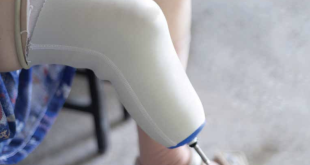Narayan Dhakal, the Director-General of the DDA, highlighted that among the banned drugs are linagliptin 2.5 mg and 10 mg strengths, rivaroxaban 5 mg strength, and aceclofenac 200 mg and 300 mg strengths. These medications are now prohibited from production within the country.
Moreover, combinations of linagliptin with metformin in varying strengths—such as linagliptin 2.5 mg with metformin 500 mg, linagliptin 2.5 mg with metformin 850 mg, linagliptin 5 mg with metformin 500 mg, and linagliptin 5 mg with metformin 850 mg—have also been subjected to the ban. Notably, these drugs are manufactured by Nepali pharmaceutical companies.
Director-General Dhakal emphasized that forthcoming decisions regarding these medications will be deliberated upon in the upcoming Medicines Advisory Committee meeting. Additionally, the DDA has cautioned against the production of new pharmaceutical products and the escalation of existing brand production in the market until recommendations are provided by the pharmaceutical advisory committee.
Rivaroxaban, the anticoagulant drug was initially patented by Bayer, and marketed under the brand name Xarelto. It is available in various strengths, including 2.5 mg, 10 mg, 15 mg, and 20 mg tablets. So banning the 5 mg strength tablet seems like a move that follows the international norms.
Aceclofenac, the pain killer medicine comes in a variety of strengths, however, its standard strength is 100 mg. As per Electronic Medicines Compendium (UK) the recommended dose is 200 mg daily, taken as two separate 100 mg doses, one tablet in the morning and one in the evening. So banning the aceclofenac immediate release 200 mg tablet and 300 mg tablets of various release characteristics may be a good move too.
Linagliptin was initially patented by Boehringer Ingelheim, and marketed under the brand name Trajenta. Trajenta comes as a 5mg tablet and as Trajenta Duo 2.5mg Linagliptin combinations with 500 mg/ 850 mg and 1000 mg of Metformin. It is to be noted that the combination does not come as a sustained release tablet from the company that patented it. DDA is known to have its stance on banning various fixed dose combinations claiming that the drugs are available in the market as individual agents and this time banning the low dose sustained release tablets and high dose immediate release tablets is a wise move.
But this is not the case with Linagliptin 2.5 mg tablets. A study conducted on the efficacy and safety of linagliptin 2.5 mg twice daily versus 5 mg once daily showed that Linagliptin 2.5 mg twice daily had non-inferior HbA1c-lowering effects after 12 weeks compared to 5 mg once daily, with comparable safety and tolerability, in T2DM patients inadequately controlled with metformin. So, banning the 2.5 mg linagliptin tablet is not necessarily a smart move here.
 Medicosnext
Medicosnext




